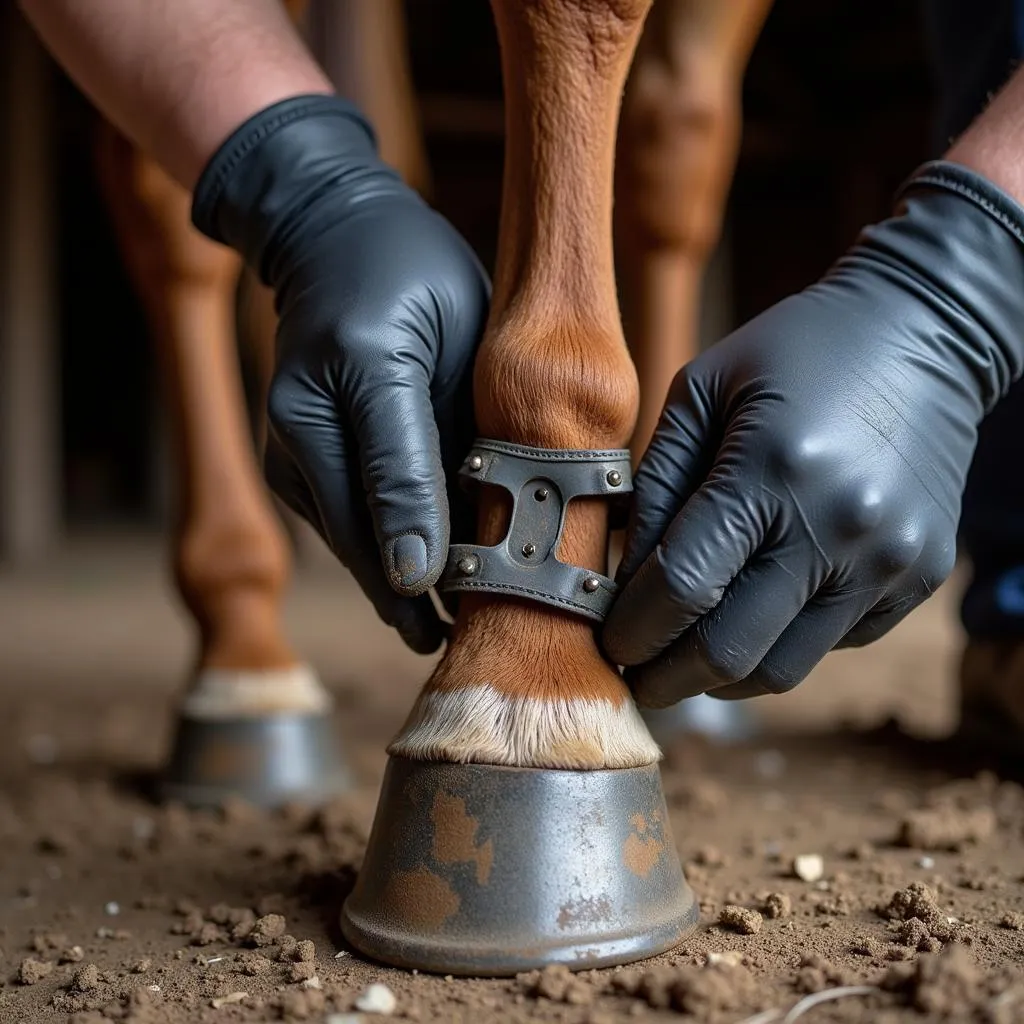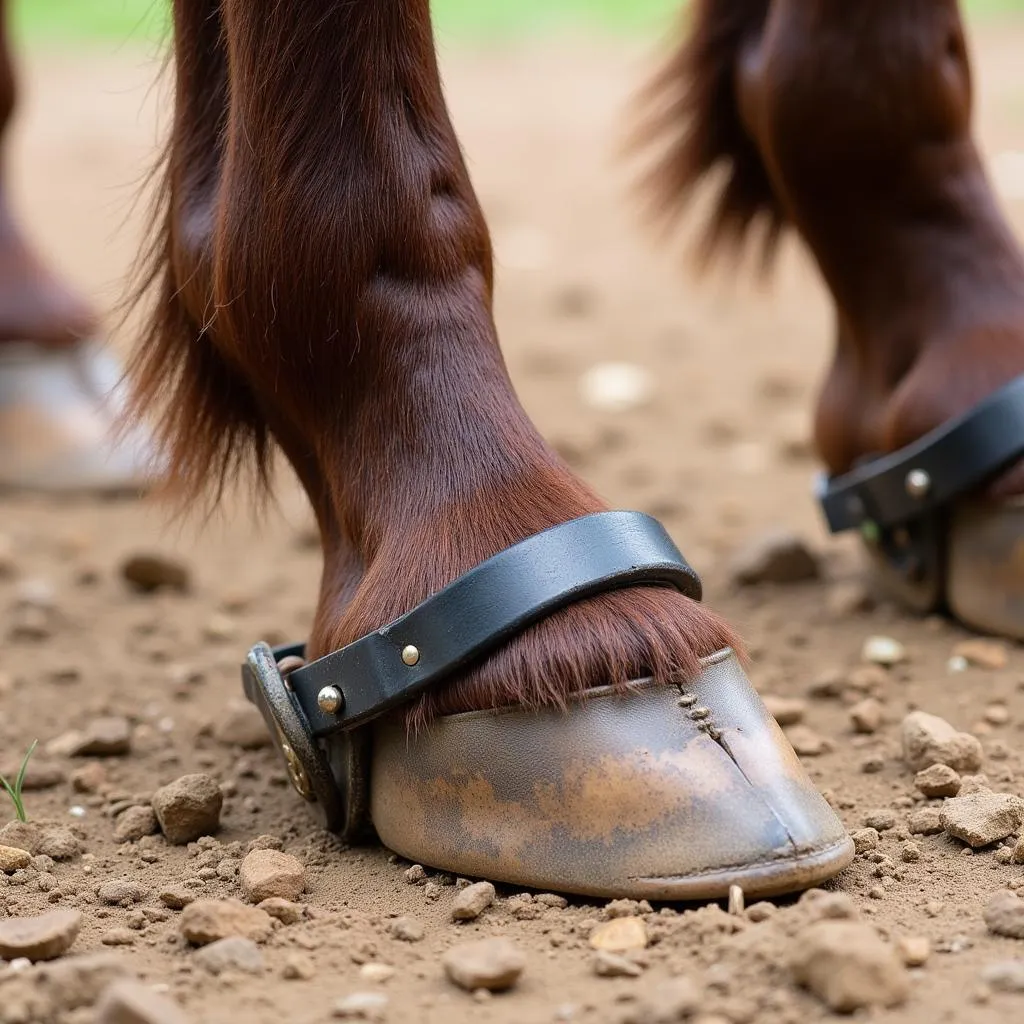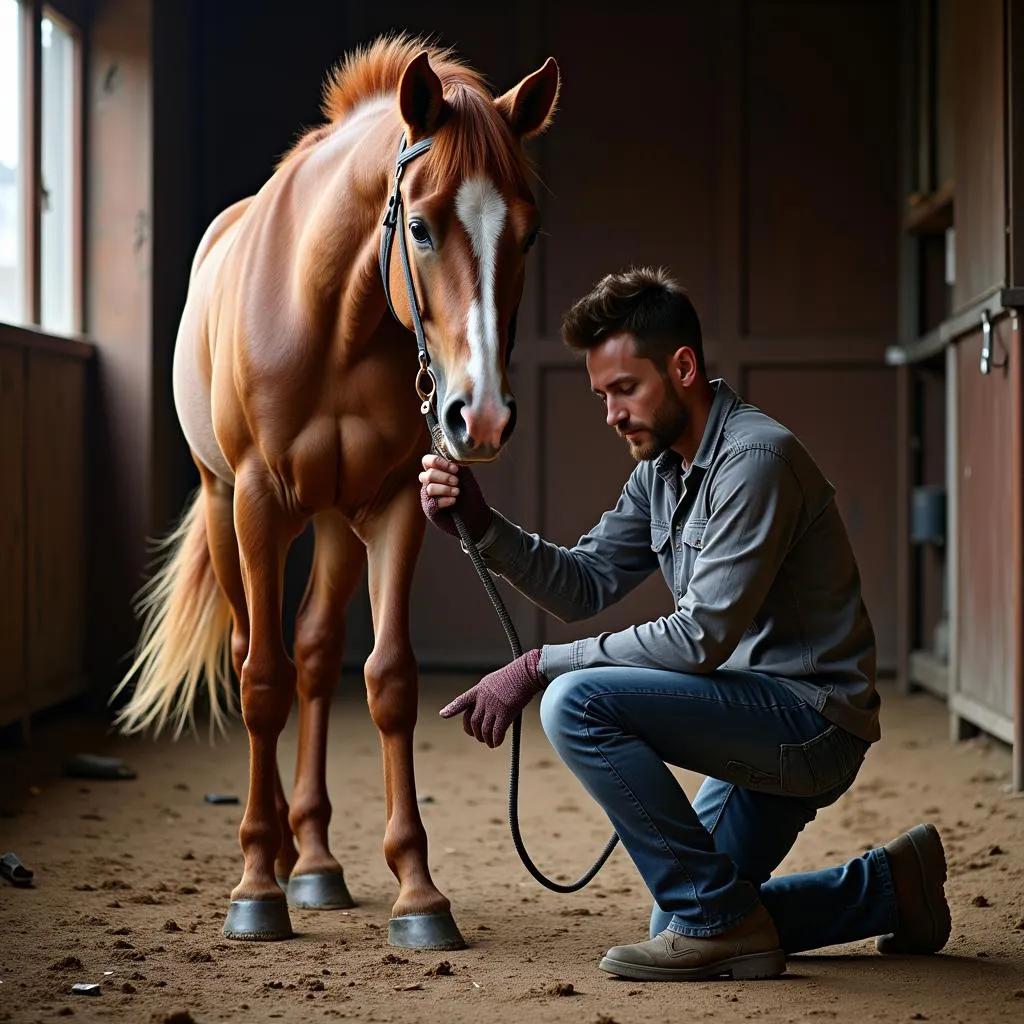Horse Shoe Clips, also known as horseshoe clips, are essential tools used in farriery to securely attach horseshoes to the hooves of horses. They play a vital role in maintaining the health, balance, and performance of horses, especially those involved in riding, racing, or working activities.
 Farrier Applying Horse Shoe Clips
Farrier Applying Horse Shoe Clips
Understanding Horse Shoe Clips
Horse shoe clips are small, metal pieces that are forged into various shapes and sizes to fit different types of horseshoes and hoof conformations. They are typically made of steel or aluminum and feature a curved or angled design that allows them to be driven into the hoof wall, securing the horseshoe in place. The number and placement of clips vary depending on the horse’s needs, the type of horseshoe used, and the farrier’s professional judgment.
Types of Horse Shoe Clips
There is a wide variety of horse shoe clips available, each with its own unique characteristics and applications. Some common types include:
- Side Clips: The most common type, side clips are placed on either side of the shoe at the widest part of the hoof.
- Toe Clips: Toe clips are positioned at the toe of the shoe and are often used in combination with side clips for added stability.
- Quarter Clips: Quarter clips are situated between the toe and side clips, providing support to the quarters of the hoof.
- Combination Clips: Combination clips combine features of different clip types, offering versatility in shoeing applications.
The Importance of Proper Horse Shoe Clip Application
The proper application of horse shoe clips is crucial for the well-being of the horse. Incorrectly placed or fitted clips can cause discomfort, lameness, and even hoof damage. Experienced farriers possess the knowledge and skills to:
- Assess the horse’s hoof conformation and gait.
- Select the appropriate type, size, and number of clips.
- Prepare the hoof wall for clip placement.
- Drive the clips securely without causing injury.
- Ensure proper clip fit and alignment.
 Horse Hoof with Securely Fitted Shoe Clips
Horse Hoof with Securely Fitted Shoe Clips
Potential Issues with Horse Shoe Clips
While horse shoe clips are essential for secure shoeing, they can pose potential problems if not managed correctly:
- Clip Interference: If clips are placed too close to sensitive hoof structures, they can cause pressure and pain.
- Clip Failure: Improperly fitted or worn clips can break or loosen, compromising the shoe’s stability.
- Hoof Cracks: Clips that are too tight or driven too deeply can contribute to hoof cracks.
Regular farrier visits and proper hoof care are vital to prevent and address these issues.
Caring for Horse Hooves with Clips
Maintaining healthy hooves is essential for horses, especially those wearing shoes with clips. Here are some tips for hoof care:
- Regular Cleaning: Remove dirt, debris, and manure from the hooves daily.
- Moisture Balance: Avoid excessively wet or dry conditions that can weaken the hoof wall.
- Hoof Supplements: Consult with a veterinarian about appropriate hoof supplements to promote hoof health.
- Farrier Appointments: Schedule regular farrier appointments every 4-8 weeks for trimming, shoeing, and clip maintenance.
Conclusion
Horse shoe clips are indispensable components of equine farriery, ensuring the secure attachment of horseshoes and supporting equine performance. Understanding the different types of clips, their importance, potential issues, and proper hoof care practices is vital for horse owners and enthusiasts alike. By prioritizing regular farrier visits and meticulous hoof care, we can contribute to the comfort, well-being, and longevity of our equine companions.
FAQs about Horse Shoe Clips
1. How often should horse shoe clips be replaced?
Horse shoe clips are typically replaced with each new shoeing, typically every 4-8 weeks, depending on the horse’s hoof growth and activity level.
2. Can horse shoe clips harm my horse?
When applied correctly by a skilled farrier, horse shoe clips are generally safe for horses. However, improper placement or fit can cause discomfort, lameness, or hoof damage.
3. What are the signs of a problem with horse shoe clips?
Signs of a problem with horse shoe clips include lameness, swelling around the hoof, heat in the hoof, and missing or loose clips.
4. Can I remove horse shoe clips myself?
It is not recommended to remove horse shoe clips yourself. Farriers have specialized tools and knowledge to safely remove clips without causing injury to the horse.
5. What type of horse shoe clips are best for my horse?
The best type of horse shoe clips for your horse depends on factors such as hoof conformation, discipline, and the farrier’s assessment. Consult with a qualified farrier to determine the most suitable option.
 Horse and Farrier Interaction During Hoof Care
Horse and Farrier Interaction During Hoof Care
For more information and expert advice on horse care, explore our other articles on Justus Horses USA.
If you need immediate assistance, please contact us at Phone Number: 0772127271, Email: [email protected] or visit our address at QGM2+WX2, Vị Trung, Vị Thuỷ, Hậu Giang, Việt Nam. Our dedicated customer care team is available 24/7 to help you.